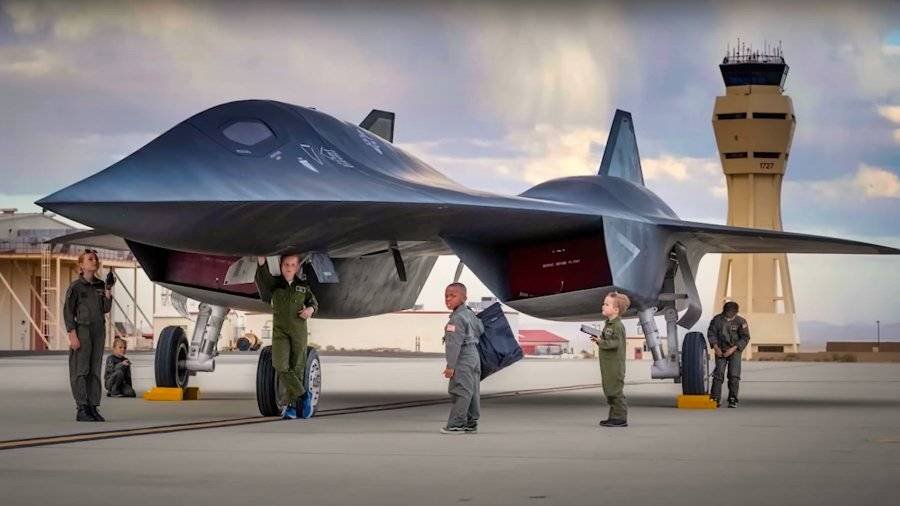A mysterious and alluring mystery has emerged in the world of aviation whispers: the SR-72 Darkstar. Is there more than one type of secret project being worked on at Lockheed Martin’s clandestine “Skunk Works”? A hypersonic bomber, a stealthy, incredibly fast aircraft, could be on the horizon, according to some.

There have been rumors that this unidentified craft might be much more powerful than the SR-71 Blackbird, its Mach 3+ predecessor. Concern grows when similarities are made to the Northrop Grumman RQ-180, a combat drone developed for surveillance purposes. The SR-72 has been called the “Son of the Blackbird,” but is it really the next great aerial dominator?
In the middle of all the conjecture, hints of reality start to pop up, most notably in the world of celluloid in “Top Gun: Maverick.” Within this film world, Tom Cruise’s character, Maverick, boards a supersonic wonder and teases viewers with a glimpse of the SR-72.
But rumors about the SR-72 had been circulating in the aerospace industry for quite some time, even before Maverick soared through the air. Rumors have circulated since 2007 regarding Lockheed Martin’s clandestine efforts to develop a plane that can reach speeds of Mach 6.
Lockheed Martin and Aerojet Rocketdyne engaged in a covert ballet of technical innovation leading up to the SR-72’s design. Whispers about scramjet-powered engines and air-breathing hypersonic propulsion systems pique curiosity, offering speeds twice as high as the Blackbird.
Amid all the mystery, China is watching the Hollywood version of the Darkstar with great interest, captivated by the action in “Top Gun: Maverick.” Word on the street is that the skilled engineers at Lockheed Martin’s Skunk Works were so impressed by the film’s full-scale mockup that the Chinese capital was eager to see it.
Even while everyone is in awe of the SR-72 in its film adaptation, there are still unanswered questions. Is it possible that this technological wonder will go beyond the realm of film and into the actual world? In the face of exciting and terrifying new challenges, might it transform from a surveillance plane into a supersonic bomber?
The technical difficulties of flying maneuvers at Mach 6 and the impracticality of bomb deployment at such velocity are only two of the many barriers that stand in the way of fulfillment. In the future, Maverick’s heroics could be supplanted by the silent watchfulness of artificial intelligence, as the possibility of unmanned autonomy becomes increasingly apparent.
We can’t help but wonder: will this mysterious star ever shine a light into the night sky, or will it always be cloaked in mystery, as rumors about the SR-72 continue to circulate?
Aviation professionals and amateurs alike have been captivated by the SR-72 Darkstar. The idea that Lockheed Martin is developing a plane that can achieve Mach 6 speeds has been circulating since 2007 or before. There has been much speculation over the function of this prospective SR-71 Blackbird successor, with some speculating that it may outperform current surveillance drones such as the Northrop Grumman RQ-180 by becoming a hypersonic bomber.
“Top Gun: Maverick,” which included a hypersonic “Darkstar” aircraft, may have provided one of the closest glances to the SR-72. The media’s portrayal of the plane has contributed to its aura of mystery, even though its existence has not been verified.
Supposedly, in 2006, Lockheed Martin and Aerojet Rocketdyne worked together to create an SR-72 scramjet engine. The airplane might be able to double its speed from a standstill to Mach 6 with the help of this sophisticated propulsion technology. Despite the lack of information, speculations circulated in 2017 that an engine test had been carried out.
More people than just aviation aficionados are curious about the SR-72. In “Top Gun: Maverick,” the plane was a major plot point, and some Chinese fans allegedly went to extreme measures to see the real prop. The amount of excitement around the SR-72 and its possible ramifications for global aviation dynamics is underscored by this level of attention.
Nevertheless, there would be considerable obstacles to overcome in order to convert the SR-72 into a hypersonic bomber. Incredible technical achievements, including solutions to problems with maneuverability, target alignment, and bomb deployment, would be necessary to take spy images or drop bombs at Mach 6 speeds.
In addition, there is talk that the SR-72 may be an autonomous unmanned plane, which would mean that military operations in the future would rely more on UAVs. Because of this, developing and deploying the SR-72 becomes even more complicated.
Regardless of your stance on the SR-72—a spy plane, a bomber, or just a test platform—you can’t deny that it has captivated aviation fans around the world and is causing them to question the boundaries between fact and fiction as they strive for aerial dominance.

